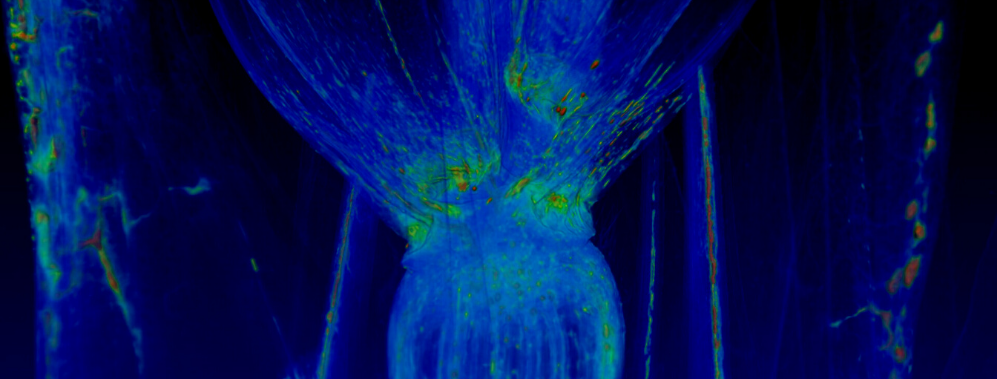
Illuminating diverse research
An NREN case study by SRNET
It’s not easy to read when it’s dim; you need a bright light to see properly. The same is true for scanning the details of microscopic objects – the brighter the light the better, and the Canadian Light Source (CLS) in Saskatoon is one of the brightest light sources around. As a national research facility, CLS produces intense beams of X-ray, ultraviolet, and infrared light for research in a highly diverse set of fields: biomedicine, palaeontology, chemistry, anthropology, material science, biology, quantum research, and agriculture, to name a few. The light from CLS is one million times brighter than the sun and enables many scientific experiments to be run simultaneously. But capturing the giant amounts data created by these experiments has always been a challenge.
Hard drive history
CLS experiments create huge multi-dimension data sets of samples under study by capturing high-resolution views of an object at high speed. For example, 3D imaging. This, as well as many other CLS datasets – were too large to be effectively transferred over a network. The precious experimental data would be placed on hard drives and shipped back to the researcher’s home institution or tucked in someone’s carry-on luggage. Not only was this method very cumbersome and slow, it was quite risky as a dropped or misplaced drive meant lost data that could be very difficult to replicate.
What is the NREN?
The National Research and Education Network (NREN) is an essential collective of infrastructure, tools and people that bolsters Canadian leadership in research, education, and innovation. CANARIE and its thirteen provincial and territorial partners form Canada’s NREN. We connect Canada’s researchers, educators, and innovators to each other and to data, technology, and colleagues around the world.
This big problem with CLS big data has been solved by SRNet, Saskatchewan’s arm of Canada’s National Research and Education Network (NREN). SRNet provides the high-speed high-bandwidth data pipe that connects CLS to its sponsoring institution, the University of Saskatchewan, as well as to researchers across the province. SRNet, with their federal partner CANARIE, further connects CLS to researchers at institutions nationally and internationally. With SRNet, the torrent of research data that CLS generates daily can be instantly sent all over the country and around the world – no hard drives required.
Diverse discoveries
The exploration and big data science of CLS is being used to watch precisely how batteries chemically react, helping improve their performance as well as reduce their failure rate. It’s examining the body’s reaction to cystic fibrosis in ways that are simply not possible with a standard X-ray clinic. It’s helping probe the boundaries of superconductivity in quantum materials, paving the way for extremely efficient electrical devices and infrastructure. And it’s determining what causes the spread of fungal disease in agricultural crops, helping us safeguard our food supply.
These are just a small sampling of the types of experiments that CLS enables from researchers who travel to the facility from around Canada as well as other countries. All these projects are immensely aided by the ability to get data back to researchers’ universities, labs, and research centres simply and quickly. And the results help Canadians in all spheres of life.
Keeping pace
While similar facilities exist around the world, CLS helps Canadian researchers avoid long wait queues for lab time, the expense of travelling and operating another country’s equipment, and the possibility that a project may not be scheduled due to that facility’s domestic priorities. CLS gives Canada its own high-powered light lab, letting our scientific exploration compete with other cutting edge discoveries around the world.

